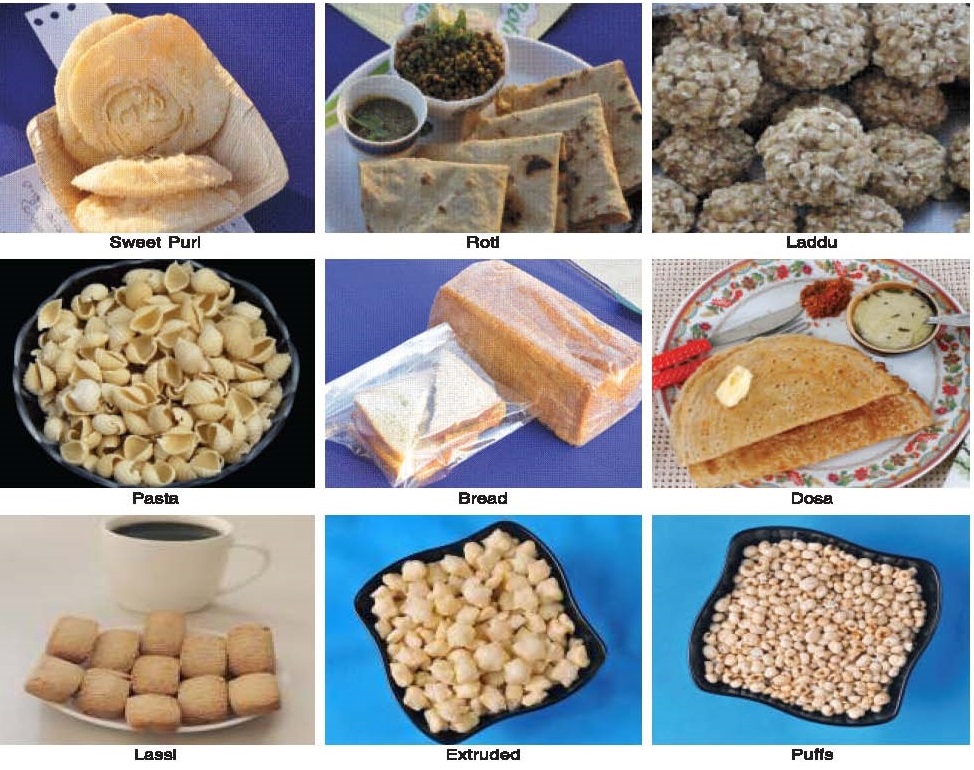In semi-arid areas of Asia and Africa, millet is a common grain crop. It is a resilient crop that can flourish on infertile soils and is immune to pests and drought. A staple food for millions of people worldwide, millet is nutrient-rich and high in protein, fibre, minerals, and vitamins.
Harvesting, threshing, washing, dehulling, milling, and sieving are just a few of the steps involved in processing millet. These processes produce a variety of byproducts that can be applied in various ways.
Start a Business in Food Processing and Agriculture Based Industry, Click Here
The Following are the Main Millet Processing Byproducts:
Bran: The outer layer of the grain that is removed during milling is called millet bran. It contains a lot of nutritional fibre, as well as B vitamins, iron, and zinc, among other vitamins and minerals. The food and pharmaceutical sectors can employ millet bran as a source of bioactive substances, an ingredient in animal feed, or as a nutritional supplement.
Read Our Book: Millet Production, Processing and Value-Added Products Handbook
Flour: The end product of milling the dehulled grain is millet flour. It serves as the foundation for many different food items, such as bread, porridge, cakes, and snacks. Because millet flour is gluten-free, it is a good substitute for those who have celiac disease or gluten intolerance.
Germ: The embryo and the endosperm, which is rich in oil, are located in the millet grain’s germ. During milling, it is separated from the endosperm and bran and can be used as a source of protein or oil. The food and cosmetics sectors employ millet germ oil, which is a high source of important fatty acids like linoleic and oleic acid. A high-quality source of protein, millet germ protein can be added to animal feed or utilised as an ingredient in culinary items.
Hulls: When millet is dehulled, the outermost layer of the grain is removed. They contain a lot of lignin, cellulose, and hemicellulose, three types of fibre that can be used as a source of material for the production of paper, textiles, and animal feed. Moreover, millet hulls can be utilised as a growing medium for mushrooms or as a boiler fuel source.
Starch: In order to thicken food products, millet starch is extracted from the grain’s endosperm. In comparison to other starches, millet starch has a low viscosity, a high freeze-thaw stability, and a strong resistance to retrogradation. Glucose can be obtained from millet starch and used to make biofuels or biodegradable polymers.
Read our Books Here: The Complete Book on Fruits, Vegetables and Food Processing
Syrup: Enzymes are used to hydrolyze millet starch to create millet syrup, a sweetener. It is utilised in the food and beverage sectors as a sweetener or flavour booster and is a natural substitute for corn syrup.
Fermented Goods: Beer, porridge, and sourdough bread are just a few of the goods that can be made from millet when it is fermented. Products made from fermented millet are full of good bacteria and yeasts, which help strengthen the immune system and promote digestive health.
Conclusion
When millet is processed, a number of useful byproducts are produced that can be applied in a variety of ways, including the creation of food, animal feed, and industrial materials. These leftovers, which are abundant in nutrients and bioactive substances, could help rural populations in developing nations to thrive sustainably.
Visit the page Select and Choose the Right Business Startup for You for sorting out the questions arising in your mind before starting any business and know which start-up you can plan.
We, at NPCS, endeavor to make business selection a simple and convenient step for any entrepreneur/startup. Our expert team, by capitalizing on its dexterity and decade’s long experience in the field, has created a list of profitable ventures for entrepreneurs who wish to diversify or venture. The list so mentioned is updated regularly to give you a regular dose of new emerging opportunities.
Click here to send your queries/Contact Us
Reasons for Buying NIIR Report:
- Our research report helps you get a detailed picture of the industry by providing an overview of the industry along with the market structure and classification.
- Our report provides market analysis covering major growth driving factors for the industry, the latest market trends and the regulatory framework of the industry.
- Our Report provides an analysis and in-depth financial comparison of major Players / Competitors.
- Our Report provides indispensable buyers' data with their company financials as well as the contact details, which can be an important tool in identifying the target customers.
- Our report provides forecasts of key parameters which help to anticipate the industry performance.
- We use reliable sources of information and databases. And information from such sources is processed by us and included in the report.
See More Links:
- Start a Business in Asia
- Start a Business in Potential Countries for Doing Business
- Best Industry for Doing Business
- Business Ideas with Low, Medium & High Investment
- Looking for Most Demandable Business Ideas for Startups
- Startup Consulting Services
- Start a Business in Africa
- Start a Business in India
- Start a Business in Middle East
- Related Videos
- Related Books
- Related Projects
- Related Market Research Reports
𝐂𝐨𝐧𝐭𝐚𝐜𝐭 𝐮𝐬
NIIR PROJECT CONSULTANCY SERVICES, DELHI
An ISO 9001:2015 Company
ENTREPRENEUR INDIA
106-E, Kamla Nagar, Opp. Mall ST,
New Delhi-110007, India.
Email: npcs.ei@gmail.com
Tel: +91-11-23843955, 23845654, 23845886
Mobile: +91-9097075054, 8800733955
Website: https://www.entrepreneurindia.co
OF_20Art23

